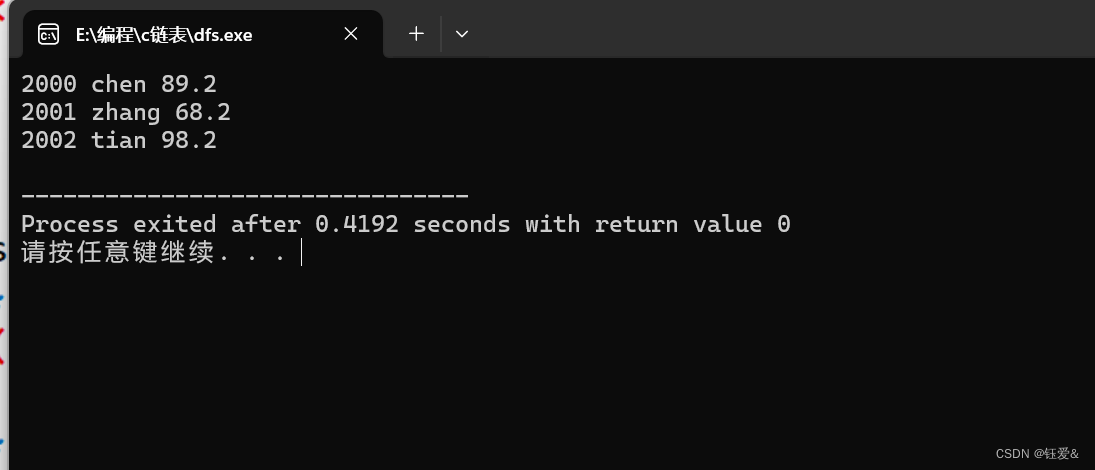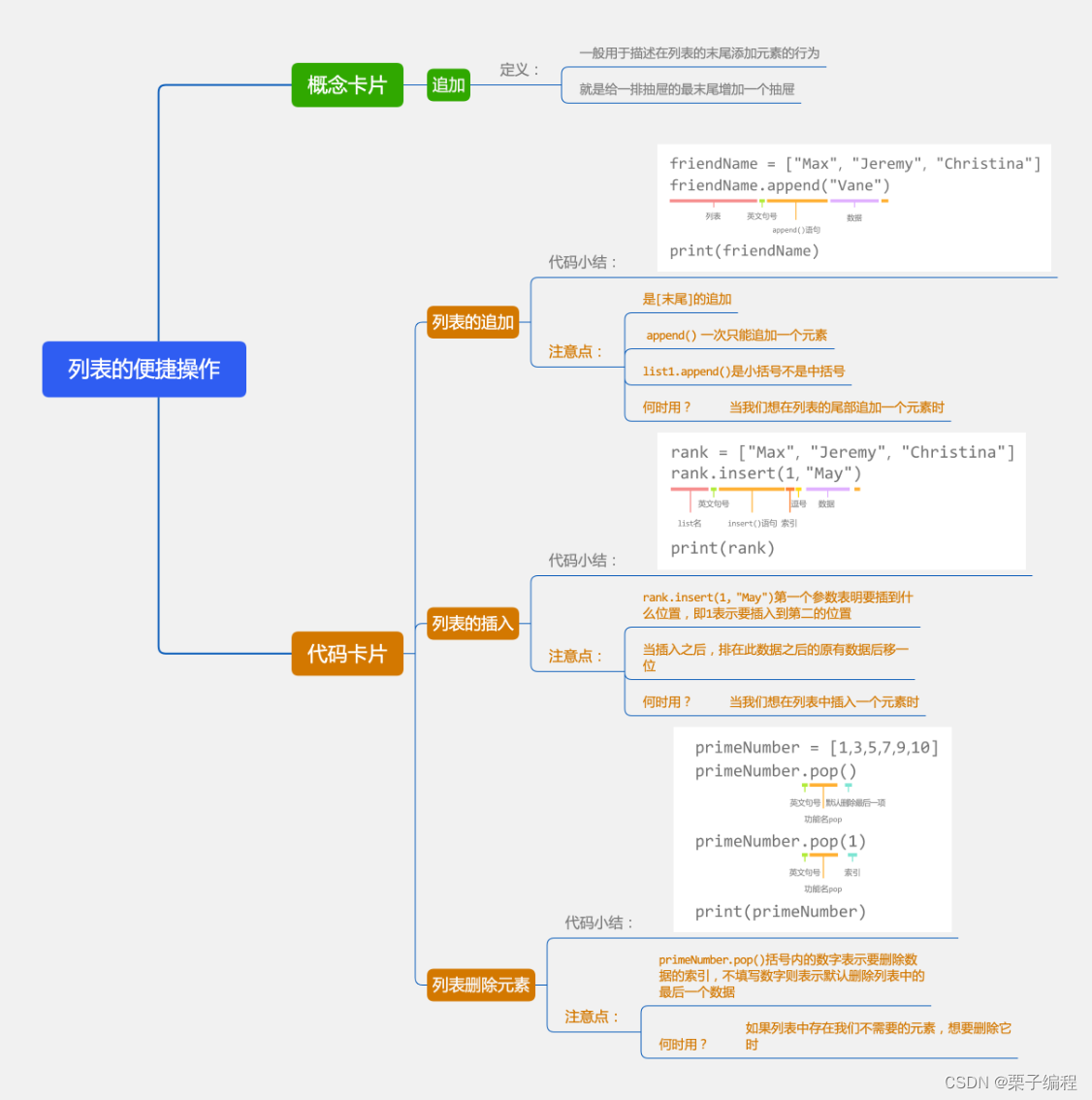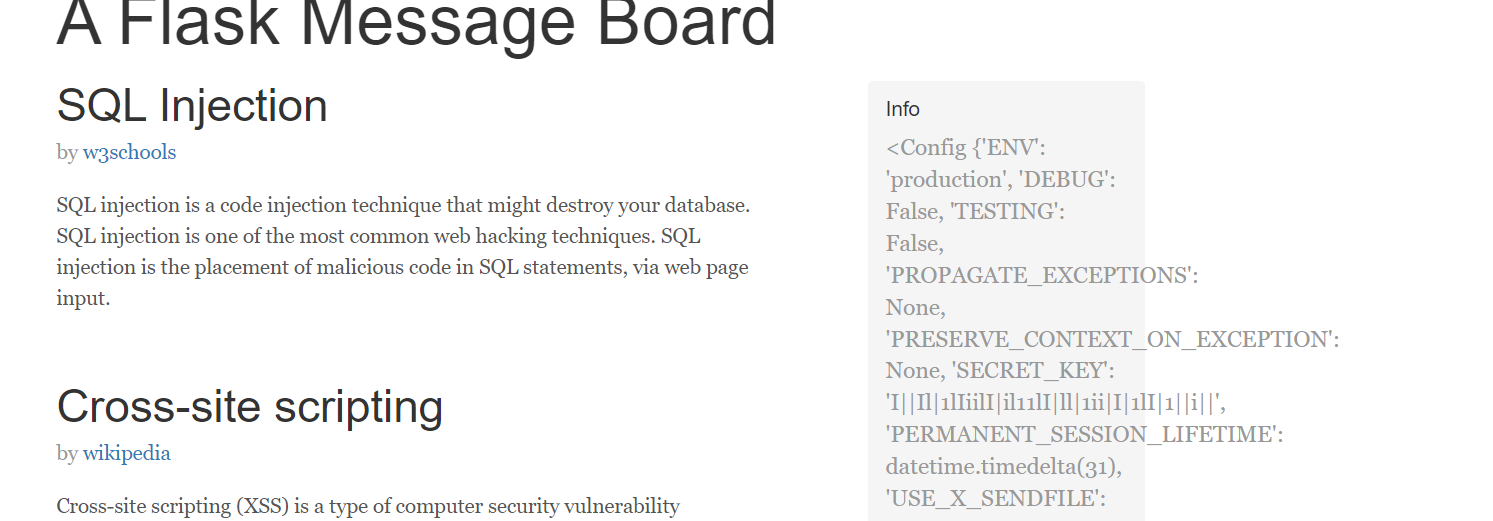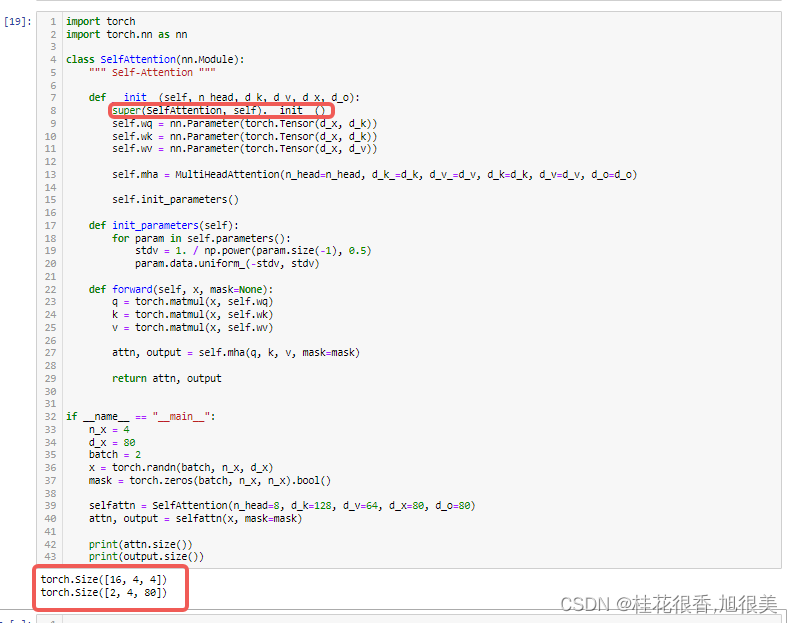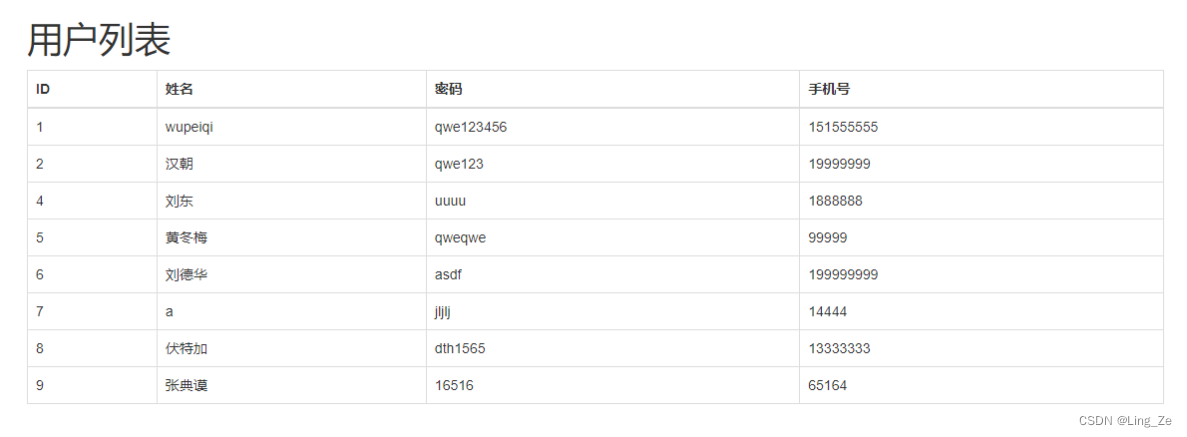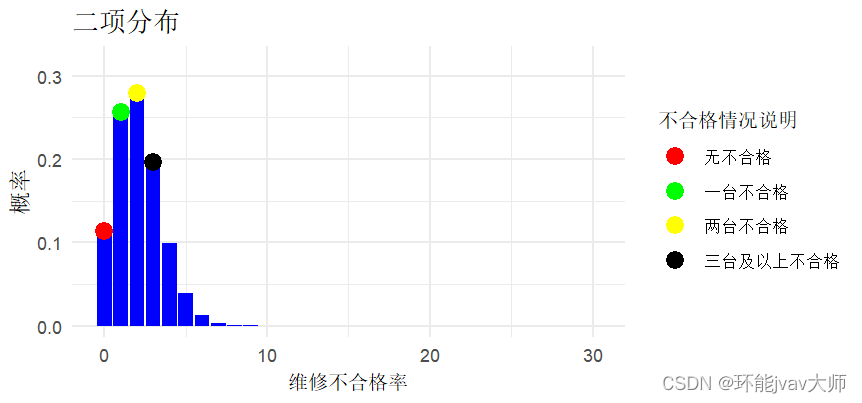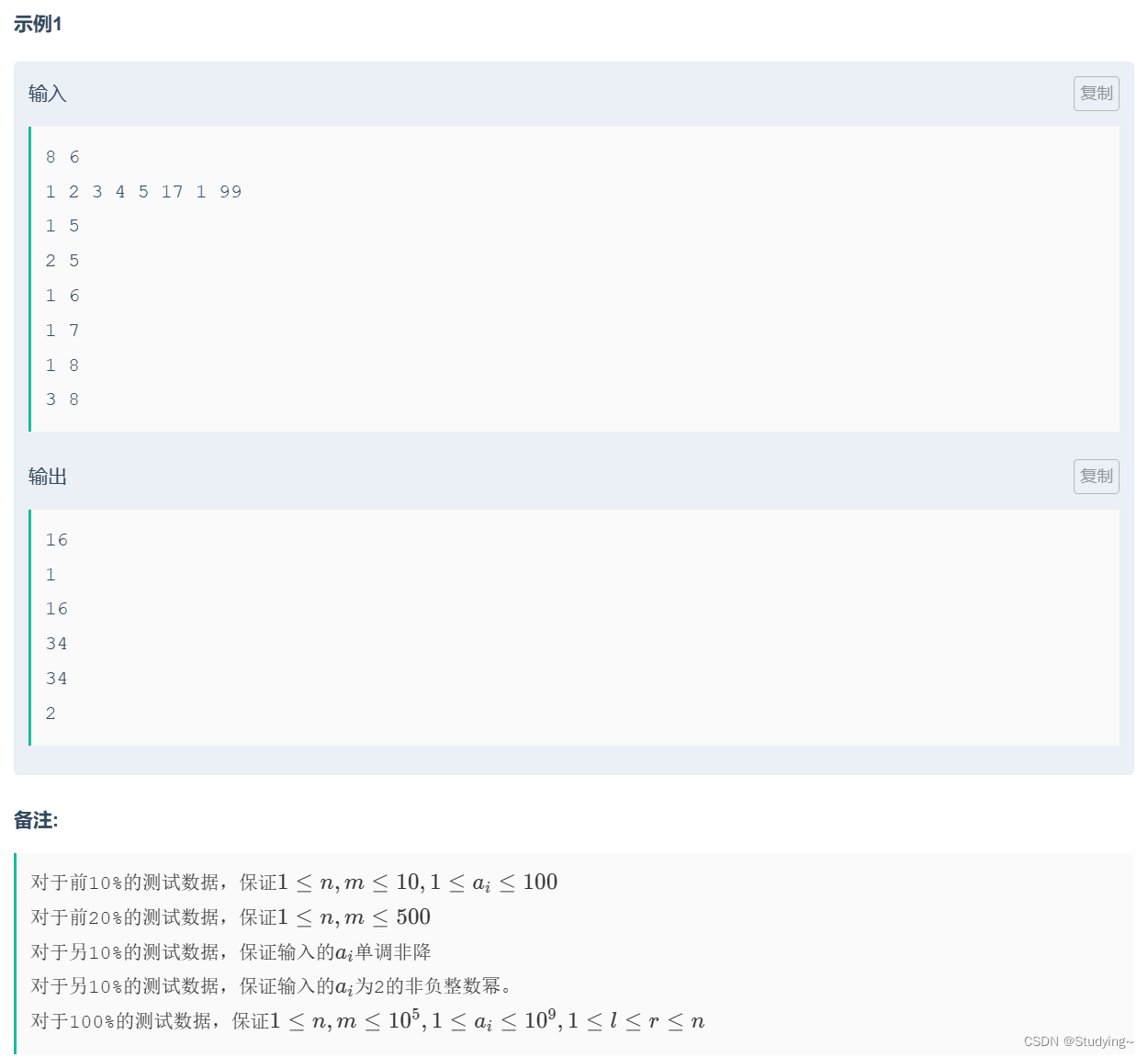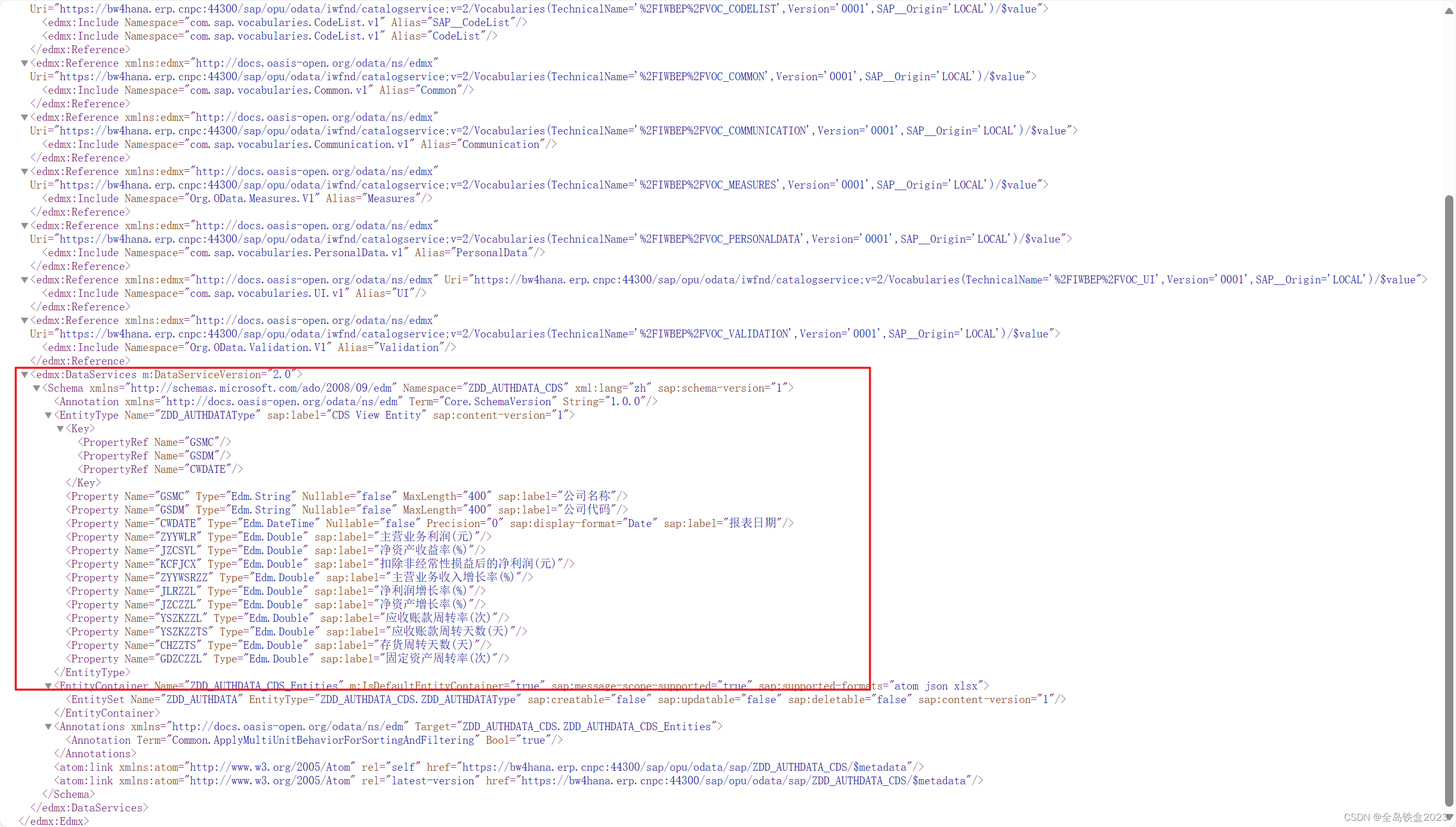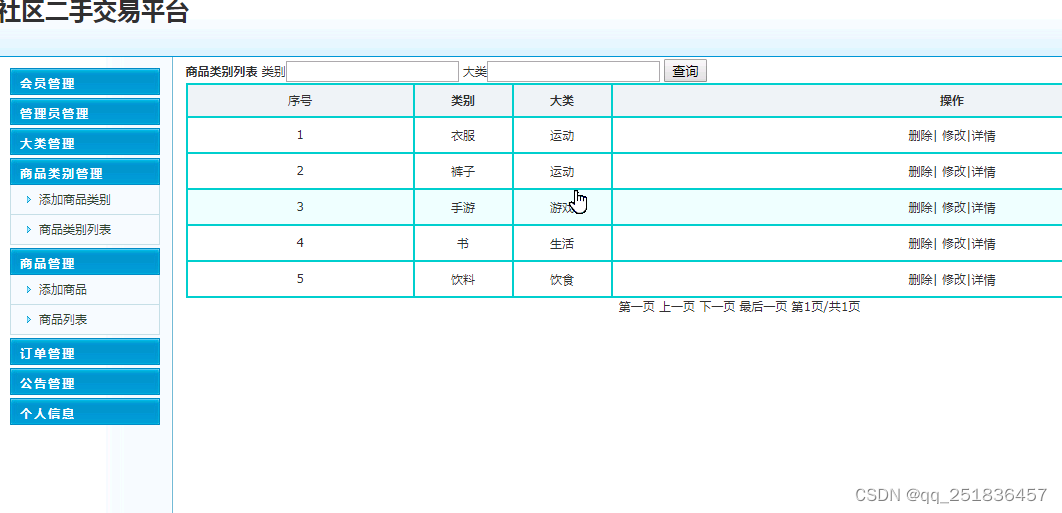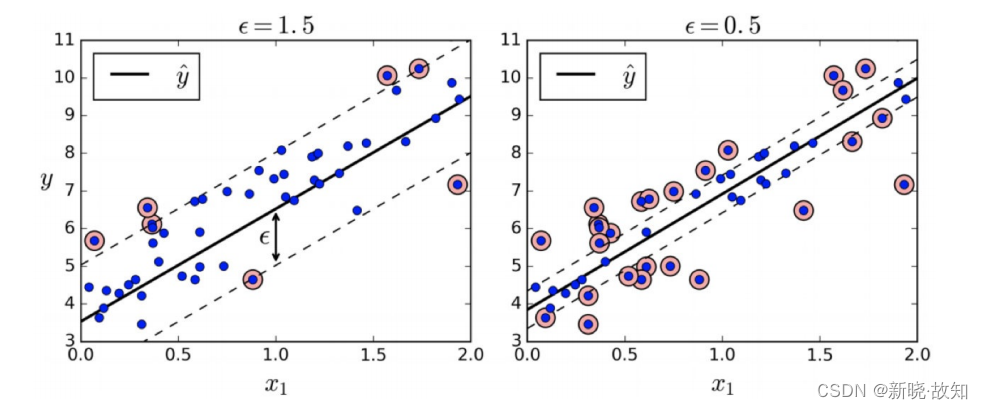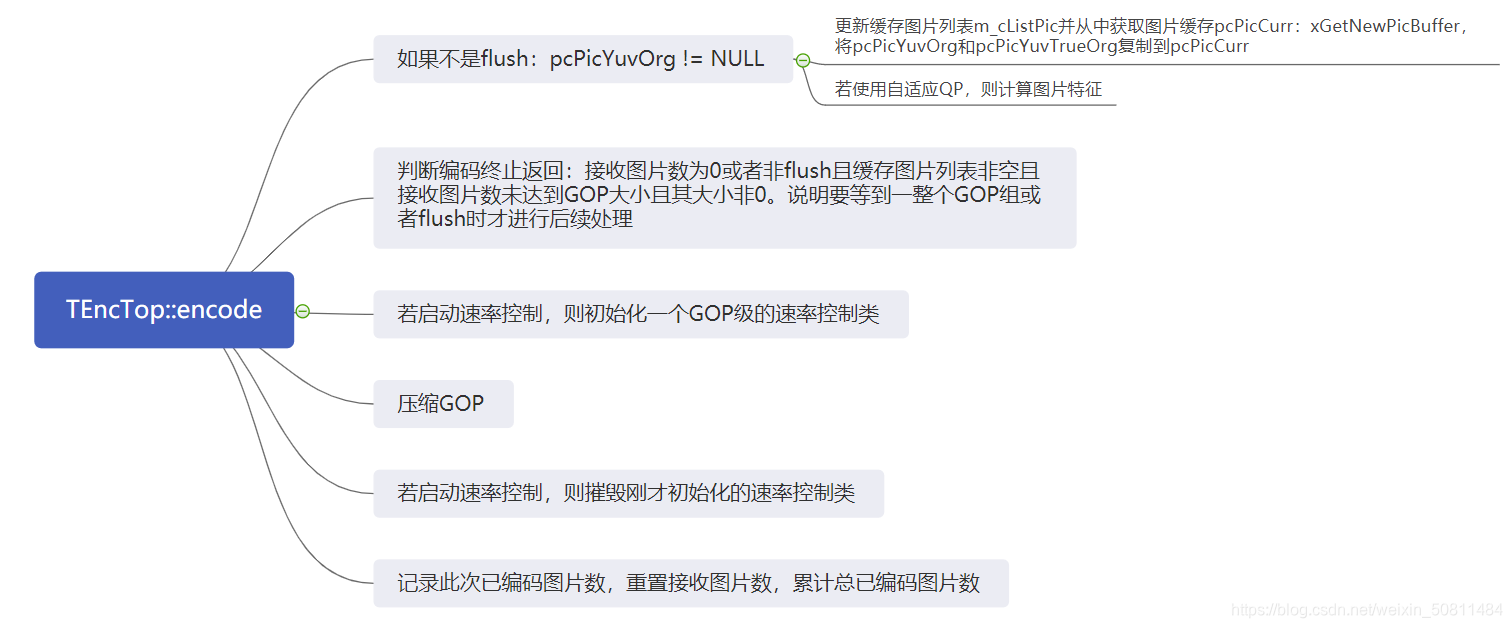计算机与信息工程学院实验报告
姓名:杨馥瑞 学号:2212080042 专业:数据科学与大数据技术
年级:2022
课程:数据结构 主讲教师:袁彩虹老师 辅导教师:_______
实验时间:2024年 __月 ___日 __午__时至__时,实验地点_413_
实验题目:栈和队列的操作
实验目的:本实验项目可以支撑“实验目标1. 熟练掌握线性表(包括顺序表、链表、栈和队列)的存储方式及其操作实现。”。
本实验通过验证方式引导学生掌握顺序栈和链栈的基本操作,循环队列和链队列的基本操作,为后续学习打下基础,以便更好地达成后续更高层次的课程目标。
实验环境(硬件和软件)Dev c++ & windows11 x64
实验内容:
(1)编程实现顺序栈和链栈的基本操作:建栈,取栈顶元素,入栈,出栈;
(2)编程实现循环队列和链队列的基本操作:建队列,取队头元素,入队,出队。
实验步骤:
实验内容(1)顺序栈:
结构体预定义顺序栈

顺序栈的初始化
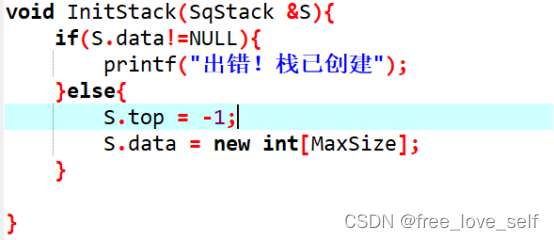
判断是否为空栈
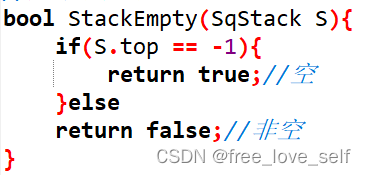
这里定义成了布尔类型
进栈

出栈
读取栈顶元素
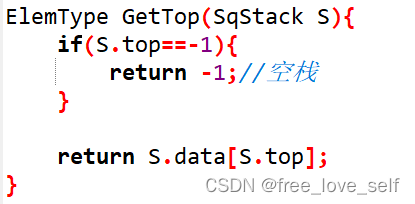
返回栈长度

制空栈

销毁栈
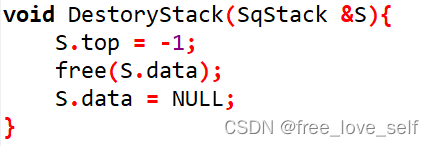
测试主函数

实验内容(2)链栈:
感觉再比这顺序栈写听没新意的,来用c++规范的类来实现吧!
结构体预定义链栈

声明一个链栈类,并构造函数初始化

判断是否为空

进栈

出栈
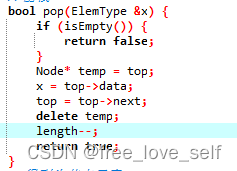
得到头节点

制空栈

得到栈长度

析构函数销毁栈

测试主函数
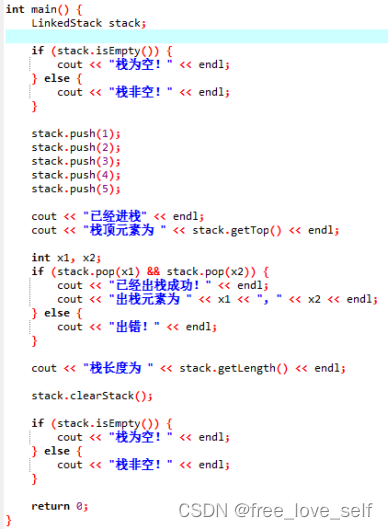
实验数据记录:
顺序栈的:
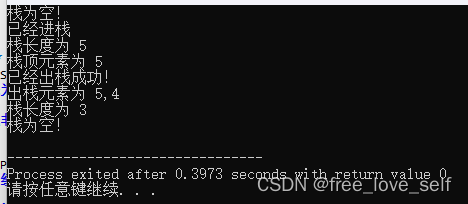
链栈的:
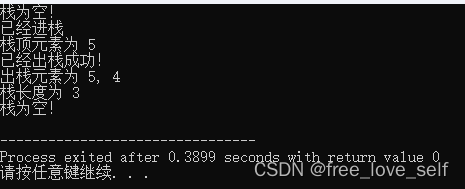
结果经验吗!就是感觉涉及到内存处理,感觉还是java爽,每次写链式的无论是链表还是链栈都要将结点释放,不像java可以自动处理,无指向的结点。
还有吗!等听完课再补充吧,目前没啥想法,感觉用c++类实现更酷一点,但是费脑细胞
源代码:
#include<bits/stdc++.h>
using namespace std;
#define MaxSize 50
#define ElemType int
typedef struct{
ElemType *data;//存放元素
int top;
}SqStack;
//初始化栈
void InitStack(SqStack &S){
if(S.data!=NULL){
printf("出错!栈已创建");
}else{
S.top = -1;
S.data = new int[MaxSize];
}
}
//判断栈是否为空
bool StackEmpty(SqStack S){
if(S.top == -1){
return true;//空
}else
return false;//非空
}
//进栈
bool Push(SqStack &S,ElemType x){
if(S.top==MaxSize-1){
return false;//栈满了
}
S.data[++S.top]=x;//指针加一接着入栈
return true;
}
//出栈
bool Pop(SqStack &S,ElemType &x){
if(S.top==-1)
return false;//空栈无法出栈
x = S.data[S.top--];
return true;//先出栈再减一
}
//读取栈顶元素
ElemType GetTop(SqStack S){
if(S.top==-1){
return -1;//空栈
}
return S.data[S.top];
}
//返回栈长度
int Length(SqStack S){
return S.top+1;
}
//制空栈
int ClearStack(SqStack &S){
S.top = -1;
}
//销毁栈
void DestoryStack(SqStack &S){
S.top = -1;
free(S.data);
S.data = NULL;
}
int main(){
SqStack S;
S.data = NULL;
//初始化
InitStack(S);
//判断是否为空
if(StackEmpty(S)){
printf("栈为空!\n");
} else{
printf("栈非空!\n");
}
//将 1-5 进栈
if(Push(S,1)&&Push(S,2)&&Push(S,3)&&Push(S,4)&&Push(S,5)){
printf("已经进栈\n");
}else{
printf("出错!\n");
}
//输出此时栈长度
printf("栈长度为 %d\n",Length(S));
//输出此时的栈顶元素
printf("栈顶元素为 %d\n",GetTop(S));
//出栈两个元素
ElemType x1,x2;
if(Pop(S,x1)&&Pop(S,x2)){
printf("已经出栈成功!\n");
printf("出栈元素为 %d,%d\n",x1,x2);
} else{
printf("出错!\n");
}
//输出此时栈长度
printf("栈长度为 %d\n",Length(S));
//销毁栈
DestoryStack(S);
//看看销好了么
if(StackEmpty(S)){
printf("栈为空!\n");
} else{
printf("栈非空!\n");
}
return 0;
}
#include <iostream>
using namespace std;
#define ElemType int
struct Node {
int data;
Node* next;
Node(int value) : data(value), next(NULL) {}//构造函数初始化一下
};
class LinkedStack {
private:
Node* top;//结点指针
int length;//长度
public:
LinkedStack() : top(NULL), length(0) {}
//判断是否为空
bool isEmpty() {
return top == NULL;
}
//进栈
void push(int value) {
Node* newNode = new Node(value);
newNode->next = top;
top = newNode;
length++;
}
//出栈
bool pop(ElemType &x) {
if (isEmpty()) {
return false;
}
Node* temp = top;
x = top->data;
top = top->next;
delete temp;
length--;
return true;
}
//得到头节点元素
int getTop() {
if (isEmpty()) {
return -1; // 空栈
}
return top->data;
}
//制空栈
void clearStack() {
while (!isEmpty()) {
Node* temp = top;
top = top->next;
delete temp;
}
}
//得到栈长度
int getLength(){
return length;
}
//析构函数
~LinkedStack() {
clearStack();
}
};
int main() {
LinkedStack stack;
if (stack.isEmpty()) {
cout << "栈为空!" << endl;
} else {
cout << "栈非空!" << endl;
}
stack.push(1);
stack.push(2);
stack.push(3);
stack.push(4);
stack.push(5);
cout << "已经进栈" << endl;
cout << "栈顶元素为 " << stack.getTop() << endl;
int x1, x2;
if (stack.pop(x1) && stack.pop(x2)) {
cout << "已经出栈成功!" << endl;
cout << "出栈元素为 " << x1 << ", " << x2 << endl;
} else {
cout << "出错!" << endl;
}
cout << "栈长度为 " << stack.getLength() << endl;
stack.clearStack();
if (stack.isEmpty()) {
cout << "栈为空!" << endl;
} else {
cout << "栈非空!" << endl;
}
return 0;
}